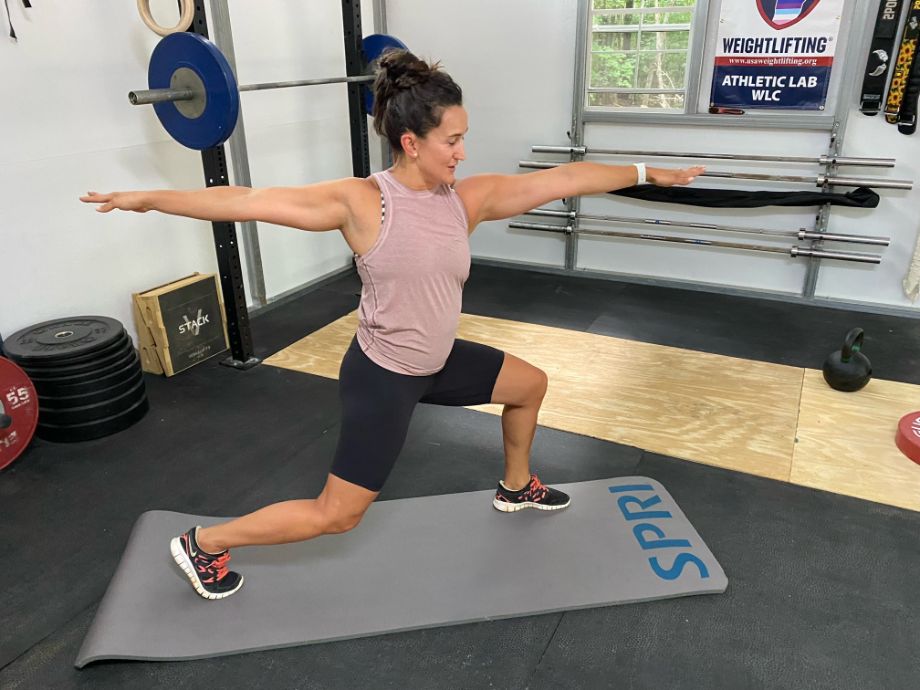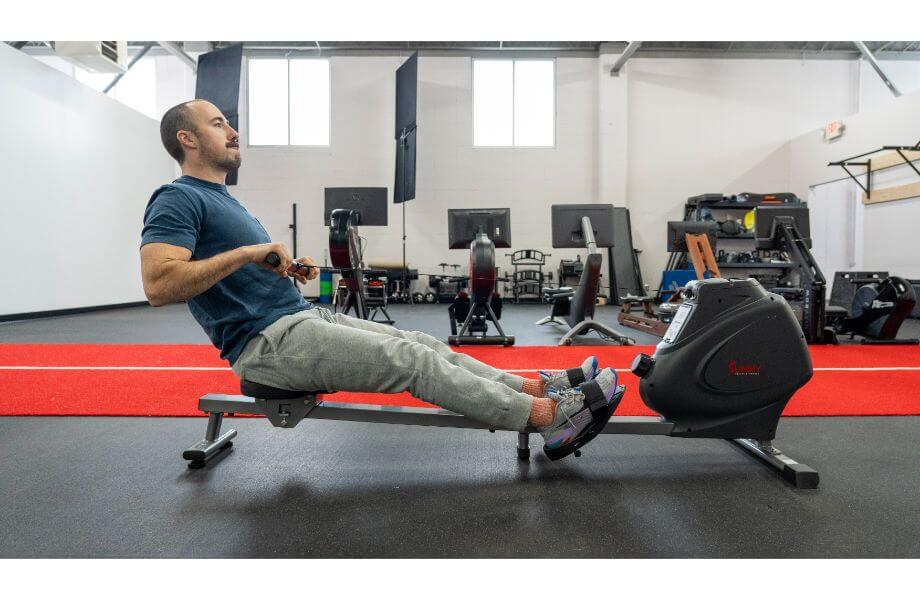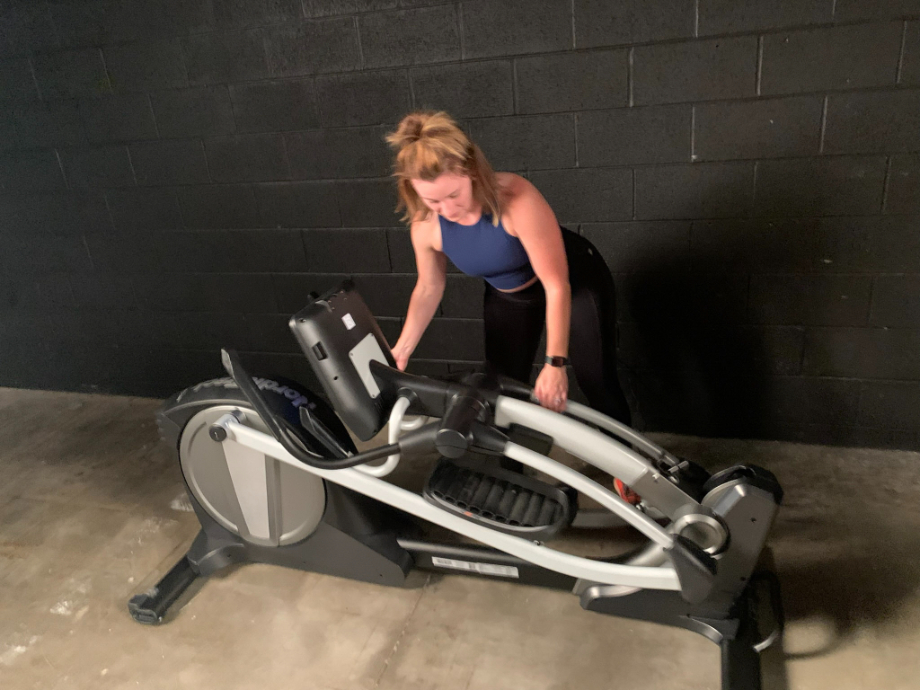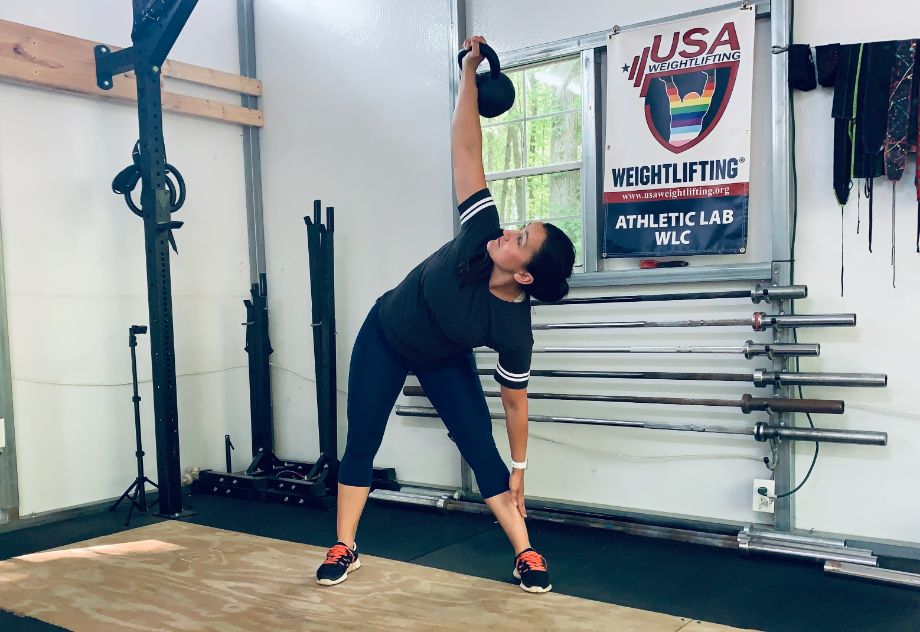Becoming a certified yoga teacher is an exciting way to boost your career credentials and expand your own personal practice. Gaining my yoga instructor certification has enabled me to share the practice of yoga, promote overall health and well-being, and make yoga teaching a central and rewarding part of my life. As a certified yoga instructor, I share the many benefits of yoga by working with multiple studios, producing online classes, and teaching many different styles of yoga— from vinyasa to yin yoga.
When talking about being “certified” in the yoga industry, I’m referring to a certification issued by the Yoga Alliance organization. Gaining your certification through the Yoga Alliance is the best way to become a practicing teacher, as many studios require a certification through the Alliance.
In this article, I’ll introduce you to the Yoga Alliance, explain how to get your certification, help you determine which yoga teacher training program is best for you, and show you how to become a certified yoga instructor.
RELATED: Yoga Facts and Statistics You May Not Know
What Is the Yoga Alliance?
The Yoga Alliance is a nonprofit—501(c)(6)—professional organization for yoga teachers and yoga schools across the globe. Many people refer to the Yoga Alliance as the “governing body” of yoga, but this isn’t the case. While many reputable studios around the world require their teachers to be certified by the Yoga Alliance, the organization is more of a directory of yoga schools and instructors that adhere to certain standards, guidelines, and ethical practices. The Yoga Alliance does not hold jurisdiction over how everyone everywhere practices yoga.
There are some mixed feelings about the Yoga Alliance in yoga communities. But overall, it ensures that registered yoga teacher training (commonly referred to as “YTT”) programs follow a specific set of guidelines in their teachings (making sure that there’s a certain amount of time spent teaching anatomy, yoga philosophy, and professional support, for example) and that yoga instructors are pursuing continuing education to ensure they’re teaching with up-to-date information.
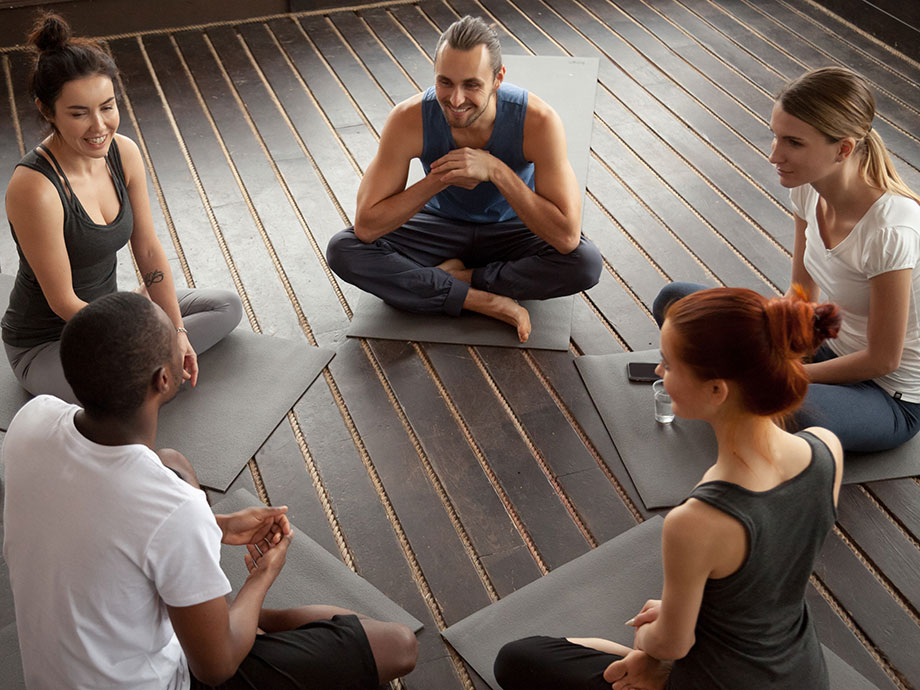
Overall, if you hope to teach yoga, it’s a good idea to attend a school that is certified by the Yoga Alliance and to register as a Yoga Alliance-certified teacher. If you’re pursuing yoga teacher training to deepen your personal yoga practice and aren’t interested in instructing others, choose the studio that best fits your needs.
RELATED: Best Continuing Education Courses For Personal Trainers
What Are the Requirements for Becoming a Certified Yoga Teacher?
According to the Yoga Alliance, Yoga Teacher Trainings must allocate1 a certain amount of time to the following subjects:
- Asana (yoga poses)
- Meditation
- Pranayama (breathing techniques)
- Anatomy and Physiology
- History, Philosophy, and Ethics
- Professional Development
- Teaching Methodology
Depending on the duration of the teacher training you choose (200, 300, or 500 hours), the time allocated to each requirement will vary. You can expect to learn about everything from yoga philosophy to a variety of postures and cueing methods in your yoga teacher training program.
RELATED: Down Dog App Review: Highly Customizable Online Yoga
What’s the Difference Between 200, 300, and 500-hour Training?
Much like it sounds, the number of hours corresponds to how many hours you spend on your education. Each yoga instructor training has a certain amount of in-class training time and a certain level of training time on your own (essentially, homework).
Something to consider: folks pursuing YTT can break up their training into chunks. Someone who receives a 200-hour yoga teacher training certificate can teach for a few years and then pursue their 300-hour training, making them a yoga teacher with a 500-hour credential. Other students may decide to go straight to the 500-hour certification.

There’s also some variety in how these courses are offered. Many certification courses will break up 200 hours of training over the course of several months on weekends to accommodate people with full-time jobs. Other certification courses will consist of five weeks of full-time coursework and offer a 500-hour teaching certificate upon completion. Be sure you understand the time commitment required before you enroll.
Where Can I Get Certified?
Many yoga studios across the globe offer a version of a YTT. A great way to get a sense if you might like a certain studio’s program is to take a class with them and ask the teacher about the yoga teacher training courses available. Often, if a studio focuses on a certain type of yoga, you can expect that style of yoga to be central in the YTT. For example, a Hatha yoga studio is likely to focus primarily on Hatha yoga in their YTT. If you prefer to study Ashtanga yoga, find a studio that offers more Ashtanga classes.
There are also a number of online options that offer a certification program in yoga teacher training. An online course is a great option if you live in an area without a lot of options for in-person training.
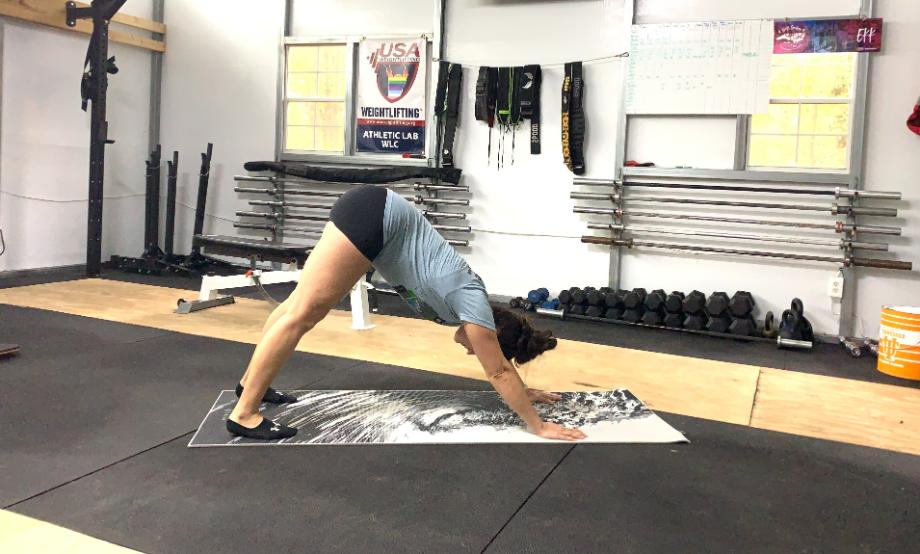
If you don’t know where to start, the Yoga Alliance has a directory of registered yoga schools (RYS) on their website, and you can narrow by location or online certification schools.
RELATED: Best Online Workout Programs
Additional Certifications
There are many different types of yoga and even more types of yoga training and workshops. Below are a few you could consider:
- Children’s Yoga: Yoga Alliance has an additional certification allowing you to teach yoga to children.
- Prenatal Yoga: This specific Yoga Alliance certification clears you to teach yoga to pregnant people.
- Yoga Therapy: Yoga Therapy is in its own category and has a different professional organization (the International Association of Yoga Therapists) that manages certifications. Yoga Therapy requires a minimum of 1000 hours of training and has far fewer certified teaching institutions.
- Trauma Informed: Many studios offer a trauma-informed teaching module that ensures you can teach students with PTSD or other forms of trauma.
RYT vs. E-RYT
You may see either of these acronyms after a yoga teacher’s name. RYT stands for “Registered Yoga Teacher.” Any yoga instructor registered with the Yoga Alliance can use this term. So you may see “(Instructor name) RYT-200,” which signifies a yoga instructor is a registered yoga teacher with 200 hours of training.
E-RYT stands for “Experienced Registered Yoga Teacher” and is awarded to an instructor with experience teaching a certain number of classes. If you see “(Instructor name) E-RYT 500,” that tells you an instructor has at least 2000 hours of in-studio teaching experience in addition to their 500-hour training. That’s a lot of yoga classes!
How Much Does It Cost To Become a Certified Yoga Instructor?
Cost depends on where you get certified, the number of hours, and if you plan on including any specializations (like children’s or prenatal yoga). Some yoga studios offer scholarships or even a work-study-style trade where a student can help clean the studio or assist in running social media for a discounted tuition rate. A 500-hour program will cost more than a 200-hour program.
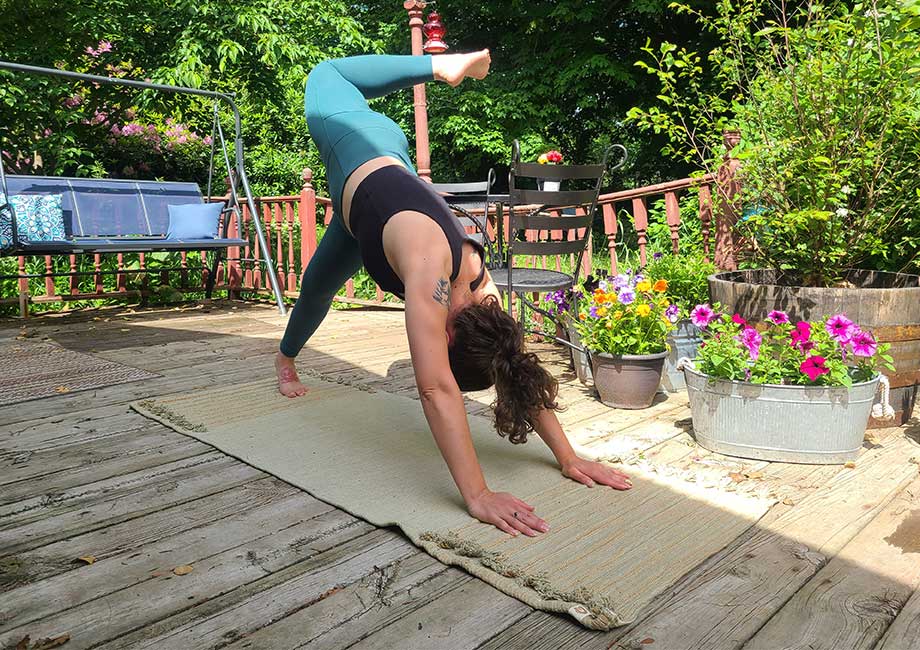
Also, factor in upkeep costs for your certification. To register with the Yoga Alliance, you’ll pay a one-time application fee of $50 and an annual membership fee of $60. Many studios will also require you to supply your own insurance, the cost of which will vary by instructor and location.
Finally, to retain your certification, you must fulfill your continuing education requirements, which is 30 hours of additional training once every three years. This can come in the form of taking a restorative yoga workshop, prenatal yoga training, or another specialization. Just be sure whoever is offering the workshop or training is certified by the Yoga Alliance.
RELATED: Fight The Effects of Aging With the 8 Best Exercises For Seniors At Home
How To Become a Certified Yoga Instructor: Final Thoughts
Becoming a certified yoga instructor is as simple as finding a certified yoga school and attending the programming! Be sure to keep the following in mind when you select your yoga instructor training program:
- Verify that the yoga school you find is certified. All certified schools will be listed in the Yoga Alliance directory on their website.
- Be sure you like the organization offering the program. No one wants to spend 200 hours (or more!) with a group they dislike.
- Determine your training level. Do you want to be able to teach folks dealing with trauma? Are you confident you want to attain your 500 hours of teaching immediately? Be sure you’re choosing a training that reflects those desires.
- Keep up with your paperwork. Luckily, there are minimal tasks to keep track of to maintain registration once you graduate from your teacher training, but don’t forget to renew your certification annually and fulfill your continuing education credits as they’re needed!
RELATED: How To Clean A Yoga Mat
How To Become a Certified Yoga Instructor: FAQs
What certification do you need for teaching yoga?
You’ll want a certification in yoga instruction through the Yoga Alliance if you want more flexibility and a range of teaching options.
Which yoga certificate is best?
The 200-hour YTT is a great starting point and the most financially accessible option for most people. However, if you want to dive right in, you should feel free to take a 300- or 500-hour course! Also, take into consideration where your passion for teaching lies. If you know you’d like to work with kids, a children’s yoga certificate is probably a good idea.
Can you get a yoga certification online?
Yes! There are many online yoga teacher training programs available. Do your due diligence and check that the online provider is a registered school through the Yoga Alliance. You can search for certified schools on their website.
What is the difference between a yoga teacher and a yoga instructor?
For most purposes, teacher and instructor are interchangeable. Some studios will also refer to their teachers as “yoga guides.”
Are yoga teachers in demand in the US?
While many yoga schools offer annual teacher training and produce yoga teachers regularly, my opinion—as a certified yoga instructor—is that good yoga teachers are always in demand and will always find a place to teach, whether it’s several classes a week with a studio or virtually.
Learn more about the Yoga Alliance and get their most up to date pricing on their website: yogaalliance.org
References
- Standards For Registered Yoga School Credentials. Yoga Alliance. https://r.yogaalliance.org/Portals/0/credentialing/Standards%20for%20RYS%20Credentials.pdf



